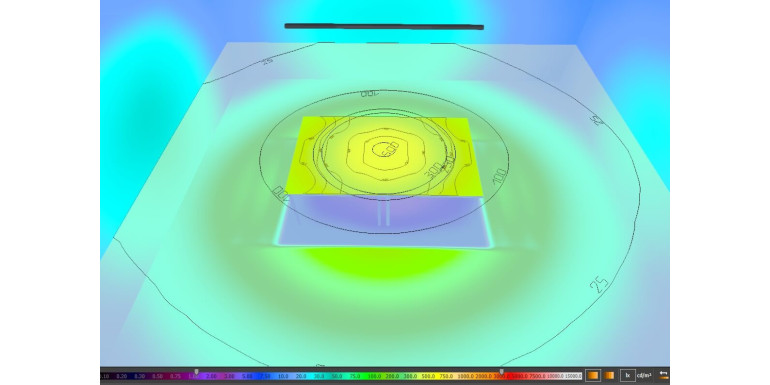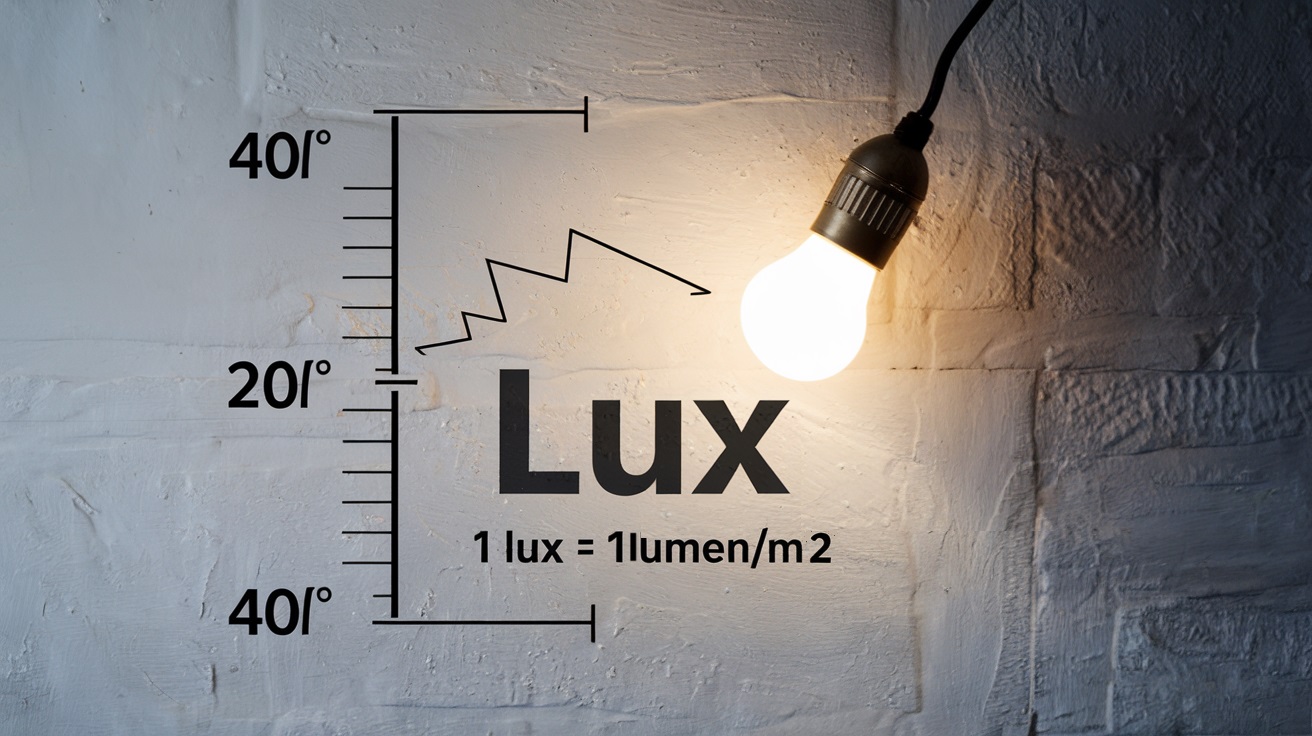-
10 mistakes in Home and Apartment Lighting 01/13/2025 12:25:13How to properly light white interiors? 01/12/2025 19:32:46LED Lighting Trends for 2025 12/24/2024 08:21:12What are the units of light intensity lux and lumen?06/13/2023 10:25:53 Advice and inspiration

What is a unit of light intensity? What are lumens and lux?
Both natural and artificial light play a very important role in human life. The human eye is sensitive to a fairly wide range of lighting, but its low level of intensity can contribute to fatigue, cause eye pain and headaches, as well as loss of the ability to see details. Luminous intensity is a term used to describe how bright something is, and lux is the SI unit for illuminance. What are lux and lumen? What does a unit of illuminance mean?
What is luminous intensity?
Light intensity is the density of the flux falling on a given surface. Simply put, it is the density of light rays emitted by its source. An increase in intensity makes the image seen clearer and sharper. Choosing the right lighting intensity is extremely important for vision, because too little or too much of it not only harms the eyes, but can also cause fatigue and headaches.
What does a unit of luminous intensity describe?
The terms lux and lumen are units of luminous intensity that are used to describe the brightness of LED bulbs. These terms are often used interchangeably. This in turn creates ambiguity regarding the quality of lighting and its application. Furthermore, it is very difficult to make an accurate comparison. Lux, as well as lumens, are units for measuring the intensity of light. The former describes the amount of light falling on a given surface, while lumens describe the amount of light released by its source.
What is lux?
The SI unit of luminous intensity is lux. The name of this unit comes from the Latin word for light. Lux is a unit of measurement that is used to describe the number of lumens falling per square meter. In practice, this means that lux always takes into account the area over which the light flow is spread, not its intensity. Therefore, if you have a light source with an output of 800 lumens, and all the lumens are spread over one square meter, you will get an illuminance of 800 lux. In turn, on two square meters it will be 400 lux, and on four meters 200 lux. Importantly, the value of lumens will not change.
What is a lumen?
Lumens are a unit of measurement of luminous flux, i.e. the total power of light emitted by a given source that passes through a given surface. The more lumens, the more light, for example, an LED bulb will provide. This unit is primarily used to calculate luminous efficacy, i.e. light efficiency.

Where can you find lux in lighting?
Each light source can be described by its intensity. That is why lux is given to items such as LED lighting, decorative bulbs, car halogens, and even the light emitted by the moon. Determining the number of lux from a given light source is extremely important in terms of safety, work ergonomics, or general functioning. According to scientists, artificial lighting meets human visual needs, but is not enough to meet biological needs. The intensity of light and the time that a person spends indoors cause the human body to misread biological signals sent by the intensity of lighting. Previously, the circadian cycle was determined by the rhythm of life, and the intensity of daylight and lux at night determined the time of work and rest. Therefore, it is extremely important to ensure the optimal level of lux in the lighting of specific rooms in homes. Where you spend the most time during the day, there should be much more of them than in the bedroom, which is used for quiet and rest.
What is the optimal light intensity in individual rooms in the house?
When finishing and arranging the interiors in your home, you should always keep in mind the important role of light. On the one hand, it can be a decorative element, and on the other, it can affect health and well-being. So what should the level of lighting intensity be in individual rooms? Depending on the room:
- kitchen - 300 - 500,
- hallway - 100,
- living room - 100 - 250,
- bedroom - 150,
- dining room - 100 - 215,
- kitchen worktop - 500 - 1000,
- reading area - 500 - 1000,
- bathroom - 300 - 600,
- basement - 150 - 500
What is a unit of illuminance? Summary
However, it should be remembered that light is perceived differently by different people. Therefore, the values presented in the previous paragraph are very flexible. In addition, the level of illuminance is influenced by many factors. Not only the lighting used, but also the light that enters the rooms from outside. If after reading a few pages of a book or work your eyes start to hurt, you should check the level of illuminance in the house and correct it if necessary.
Menu
- +Outdoor lighting
- +Indoor lighting
- Living room
- Bedroom
- Dining room
- LED bathroom lighting
- LED kitchen lighting
- LED stairs lighting
- +LED bulbs
- All manufacturers
- Prices drop
- New Products
- Bestseller




